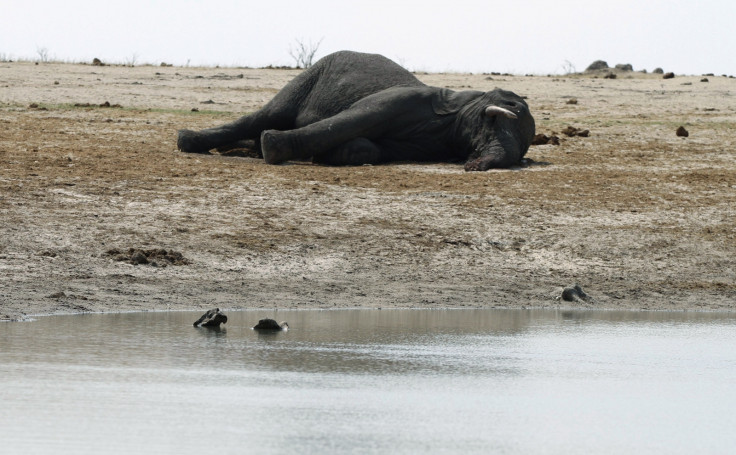Zimbabwe ivory trade: 22 elephants in Hwange National Park killed by cyanide poachers

Twenty-two elephants have been killed in Zimbabwe's Hwange National Park by poachers using cyanide poisoning. The poachers left with three of the dead animals' tusks, park officials said.
This follows the slaughter of 26 elephants at two locations in Hwange National Park less than two weeks ago. Again, poachers used cyanide poisoning and removed their tusks. This brings the death toll of elephants as a result of the illegal ivory trade in Zimbabwe to 62.
The carcasses were found in the early hours of Monday morning, spokeswoman Caroline Washaya-Moyo told AP. "Again, it is cyanide poisoning," she said. "We are now trying to check how many elephants had fully developed tusks because babies are among those killed. The rate at which we are losing animals to cyanide is alarming. Many other species are also dying from the cyanide used by poachers to target elephants. We are appealing to people in communities close to national parks to cooperate with authorities."
In 2013, poachers in Zimbabwe killed over 300 elephants with cyanide poisoning, a situation described as the largest massacre of elephants for 25 years. Cyanide is particularly hazardous to wildlife in the parks because it affects the entire food chain.
Chief Insp Muyambirwa Muzzah highlighted the vicious cycle of cyanide poaching: "What they were doing is very cruel because it does not end with the death of the elephants. We have what we call the fourth-generation effect due to the potency of cyanide as a poison.
"Animals that feed on the dead elephants will die and those that feed on the dead animals will also die. It will go back into the food chain and hundreds of animals may end up dead."
© Copyright IBTimes 2024. All rights reserved.






